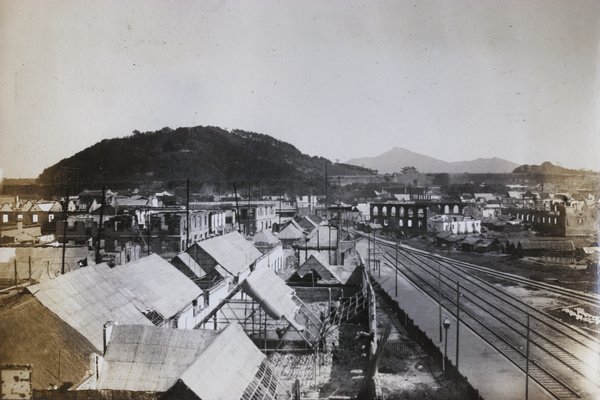Ruined buildings near Hsia Kwan Wharf railway station (下关码头), Nanjing (南京市)

Collection
Identifier
OH03-050
Notes
University of Bristol - Historical Photographs of China reference number: OH03-050. The city suffered from the violence of the Second Revolution (Ch: 第二次革命) of 1913. The Second Revolution was instigated by the Guomindang party, who had won China’s first nationwide democratic elections in 1913. Members organised a rebellion against Yuan Shi-kai after he had ordered the assassination of Song Jiaren, the party's prime-minister designate, in March. The violence lasted from July until early September 1913. The Qing loyalist General Zhang Qun (Ch: 张勋; other: Chang Hsün), who threw in his lot with Yuan, finally took Nanjing back from the GMD rebels. The sign on the platform of the railway station: HSIAKWANWHARF. Hsia Kwan Wharf (pinyin: Xiaguan matou; Chinese: 下关码头) or modern day Zhongshan Wharf (Chinese: 中山码头).





